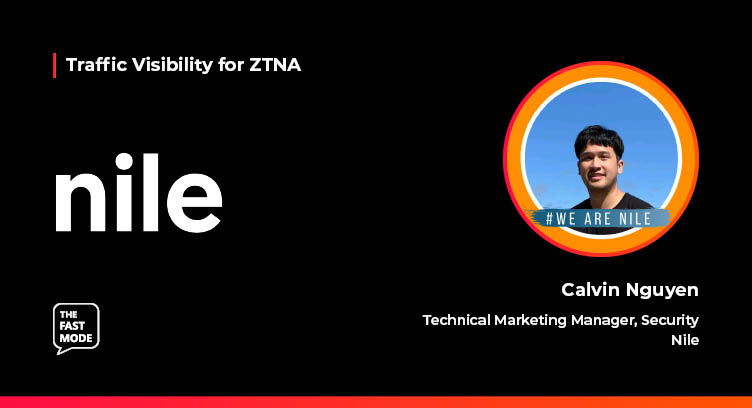The Fast Mode spoke to Calvin Nguyen, Technical Marketing Manager of Security at Nile on the impact of traffic visibility on ZTNA networks. Calvin joins us in a series of discussions with leading cybersecurity and networking vendors, assessing the evolution of ZTNA technologies, the roadmap for ZTNA deployments, the benefits of ZTNA for enterprise and telco networks, and the need for real-time traffic visibility technologies such as DPI for ZTNA.
Ariana: What’s in store for ZTNA vendors in the next 10 years?
Calvin: As we look to the future, the modern technology landscape is marked by the widespread adoption of cloud technologies, a shift towards architectural modularity, and the proliferation of diverse devices like IoT and BYOD within network environments. In the next decade, we anticipate explosive growth in the variety of devices interconnected within networks, with edge computing becoming increasingly prevalent to meet the demanding performance requirements of applications and devices within these networks. To effectively manage this intricate web of interconnected elements and alleviate operational burdens, organizations are expected to integrate artificial intelligence (AI) into their digital strategies.
In addition, the principle of least privilege will continue to be a driving force behind ZTNA strategies, with the additional refinement of continuous access checks, featuring multiple layers of scrutiny where AI plays an integral role. ZTNA vendors will need to offer not only comprehensive visibility but also automated contextual correlations, enabling the swift detection and remediation of anomalies, preferably without user intervention. Consequently, in the next decade, the focus of ZTNA strategies will revolve around simplifying implementation for organizations, ensuring they can practically adopt these strategies without incurring additional operational burdens. This simplification aims to make ZTNA more accessible and effective, overall improve the security posture for organizations, and protect against emerging threats in a continuously evolving digital landscape.
Ariana: Why is cloud a key component of ZTNA?
Calvin: The widespread adoption of cloud technologies, a shift towards architectural modularity, and the proliferation of diverse devices, such as IoT and BYOD, within network environments present evident and subtle operational challenges. Obvious challenges involve scaling to meet increasing demands and ensuring low-latency access for all users, devices, and applications across the network, regardless of location. The hidden challenges are the complexity required to configure and integrate various disparate products while integrating them with existing network infrastructure, and continuously supporting these technologies as they become legacy to avoid operational disruption. Cloud is an integral component of Zero Trust Network Access due to its native ability to help organizations easily and quickly implement a strategy and service that is scalable, and highly available across different geographic locations while keeping it easy to manage with centralized management capabilities. Updates can be quickly pushed down from the cloud to various sites. Finally, the standardization inherent in a cloud-based ZTNA approach can significantly enhance security posture by mitigating misconfigurations resulting from manual efforts, all the while maintaining a consistently high-quality and secure user access experience.
Calvin Nguyen is the Technical Marketing Manager of Security at Nile
This interview is a part of The Fast Mode's Next-Gen DPI Traffic Visibility for ZTNA segment, featuring over 40 leading cybersecurity and networking solution providers and their views on the importance of traffic visibility for ZTNA. A research report on this topic will be published in January 2024 - for more information, visit here.


















